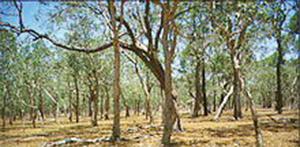Environmentalists and researchers from Bengaluru have made a case for savannahs to be recognised as “unique ecosystems”, distinct from forests. According to experts, savannahs range from grasslands with scattered trees to densely tree-covered woodlands, typically along a gradient of increasing rainfall, with the defining characteristic being that the tree canopy is not closed and the understorey is grassy.
Analysis by National Centre for Biological Sciences (NCBS, Bengaluru); Centre for Integrative Conservation (Xishuangbanna Tropical Botanical Garden at the Chinese Academy of Sciences) and University of Leeds (UK), shows that the future of Asian savannahs is uncertain and the common misperception of savannahs as degraded forests poses significant conservation and management challenges. The Asian savannahs, they said, are heavily threatened by land-use changes, including conversion to agriculture and tree plantations.
The researchers studied various kinds of Asian savannahs -- deciduous broadleaf savannahs as found in south India; fine-leafed and spiny savannahs as found in Sariska Tiger Reserve in central India; and pine savannahs (Pinus roxburghii), which can be seen in the Himalayan foothills in Dehradun in north India. Shifts in patterns of water availability during the monsoons along with changes in total rainfall will have large impacts on the structure and dynamics of Asian savannahs over the coming decades, reveal the findings. In particular, the savannahs of the Indian subcontinent, the results suggest, will show large losses in their geographical extent.“The savannahs of Asia remain locally unrecognised as distinctive ecosystems, and continue to be viewed as degraded forests or seasonally dry tropical forests,” said the researchers.
Their assessment reveals that inappropriate fire and herbivore management resulting from a lack of understanding of the functional roles of such disturbances in these ecosystems, land-use conversions to agriculture, tree plantations, severe invasions by exotic woody species, as well as climate change, are negatively impacting them and could result in large declines in tree diversity.
“Of particular concern are government-driven afforestation initiatives in the context of emerging programmes for carbon sequestration, which are a major threat to mixed tree–grass biomes globally. For example, the ‘Green India’ mission aims ‘to increase and improve tree cover on 10 million hectares of forest and non-forest lands’ in the subcontinent. A key challenge in this context will be to distinguish derived savannahs via forest degradation from ancient savannahs, which should be conserved for their unique biodiversity, particularly for the herbivore communities that they support,” said the research team. 
Shifts in patterns of water availability will have impacts on the structure and dynamics of Asian savannahs (Image by Mihika Basu) URL: http://bangaloremirror.indiatimes.com/bangalore/others/Recognise-savannahs-as-ecosystem-experts-say/articleshow/54905547.cms |

